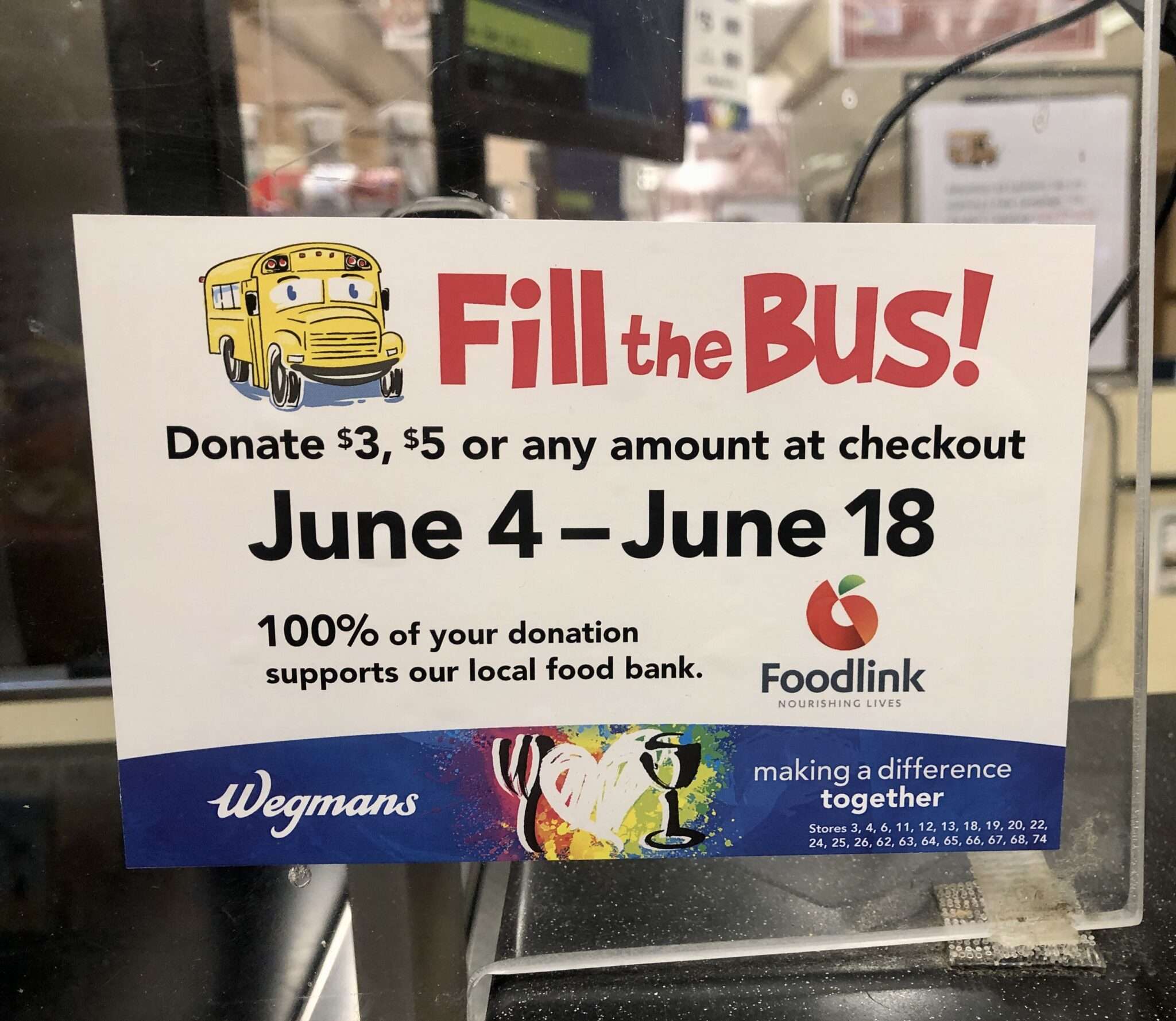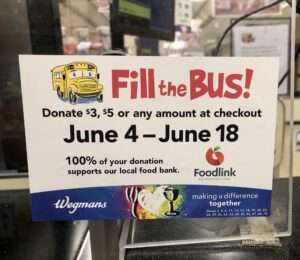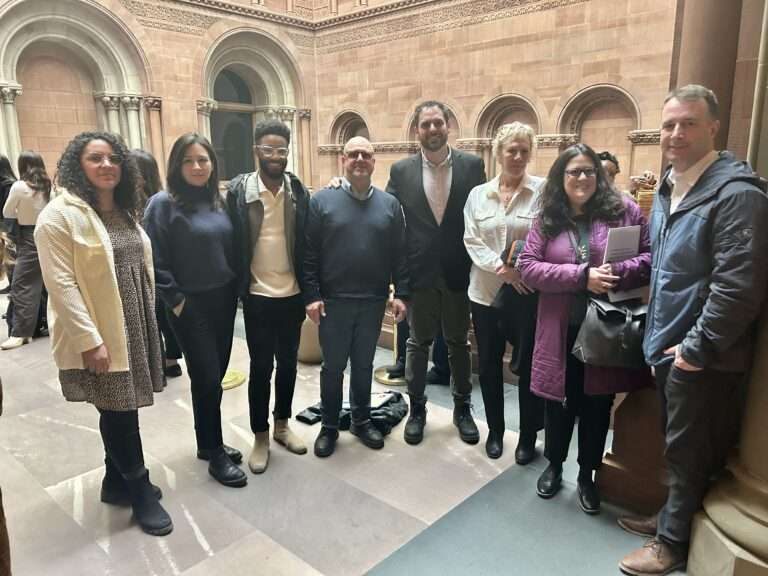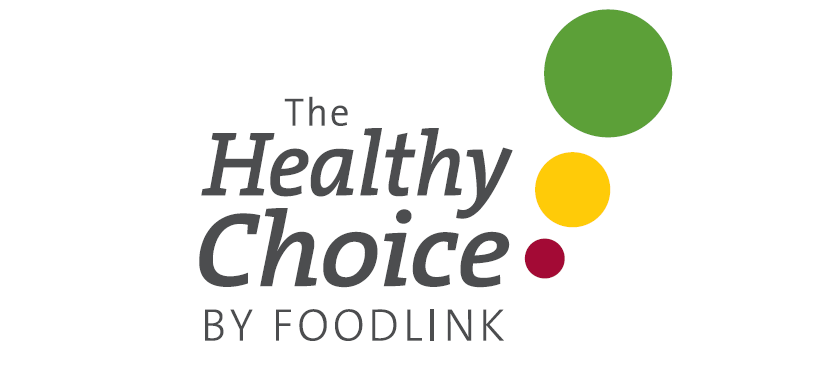
Foodlink was recently featured in the Gretchen Swanson Center for Nutrition‘s January newsletter, about the work we’re doing related to the Rooted in Evidence grant we received last year. Foodlink is implementing our new nutrition ranking system, The Healthy Choice, in our “Front Door” food pantries — the term we use to describe Foodlink’s high-capacity member food pantries across our service area.
The Healthy Choice’s full ranking system can be found on Foodlink’s website, as a key component to its Community Health Commitment.
This grant allows us to educate and train pantry staff about healthy foods, and measure whether the system has a positive health outcome on pantry clients. Below is the text from Foodlink’s entry in the GSCN newsletter:
Rooted in Evidence grantee, Foodlink, is using grant funds to evaluate the implementation of The Healthy Choice nutrition ranking system in four Front Door food pantries, some of their highest-capacity member agencies. Foodlink launched three initiatives to improve the nutritional quality of food that is distributed to clients. One of those programs, “The Healthy Choice,” is a new, evidence-based, whole food-focused nutrition ranking system. The levels include green: choose often, yellow: choose sometimes, and red: choose rarely. The Healthy Choice is used to monitor and improve the proportion of nutritious food taken in by Foodlink, and distributed to network partners. Foodlink is committed to distributing 95% green- and yellow-ranked foods by 2021.
Pantry strategies to achieve this goal include:
• Encouraging donations of green- and yellow-ranked items
• Establishing formalized nutrition/ordering policies that encourage the procurement of green- and yellow-ranked items and encourage red-ranked items to be procured rarely
• Emphasizing green- and/or yellow-ranked items by placing them in multiple areas to provide repeat exposure
• Requiring all pantry staff and volunteers to receive nutrition education within the past year so they have the knowledge and capacity to follow The Healthy Choice system and create healthier pantry environment nudges
As part of this grant, Foodlink is holding educational trainings with pantry staff and volunteers to increase self-efficacy and capacity to implement The Healthy Choice at their respective organizations. Additionally, Foodlink is building client-facing messaging related to The Healthy Choice, including signage on shelves that help clients navigate food choices that are organized by ranking. The messages are simple, accessible to a variety of literacy and language needs, and help to clearly and quickly make healthy choices easy. This funding and partnership will help Foodlink understand if improvements in their network, foods distributed and pantry environment have an impact on pantry-level and client-level outcomes.
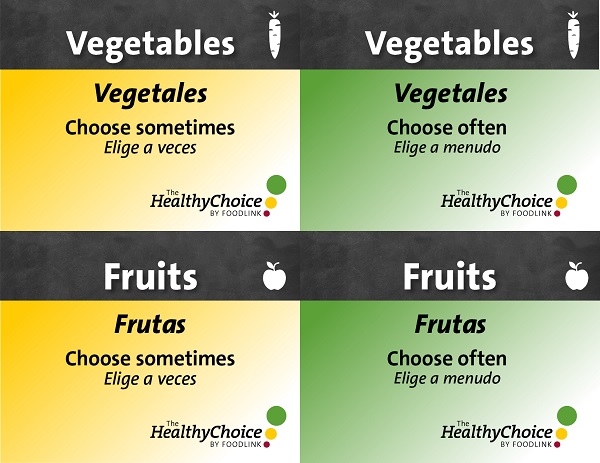
Following is a Q&A with Foodlink’s Nutrition Resource Manager Laura Held, MS:
What about The Healthy Choice nutrition ranking excites you most?
Most exciting to me is that The Healthy Choice serves three distinct but interacting purposes: ranking Foodlink product inventory and steering procurement decisions, helping our member agencies and partners choose healthy options for their clients and solicit donations from the community, and helping community members make healthy choices for their families.
At Foodlink we believe, and I personally believe, that it is our responsibility to leverage the power that we wield each year with millions of pounds of food and millions of dollars in food-related assets not just toward ending hunger, but also toward building healthier communities. The Healthy Choice is our guide as we do so.
What do you want to know most about The Healthy Choice and its impacts?
I want to know how easy The Healthy Choice is for pantry staff and volunteers to implement and how worthwhile they find it is to do so. This is critical for Foodlink to move forward with implementation of the ranking in more pantries. I am certain that we will learn numerous ways that we can revise and improve our training, materials and technical assistance.
Our longer-term goal is to be able to assess its efficacy on increasing healthy choices at the client level. And that prospect is extremely exciting. But for our current project with the Gretchen Swanson Center, we will start smaller by learning from focus groups how clients feel about and understand The Healthy Choice at their local pantry.
What will data collection entail over the next six months?
We are collecting data in four ways:
1) Foodlink product order tracking: Does an increase of healthy food at the food bank level increase healthy food ordering by pantries?
2) Pantry staff/volunteer survey: Does staff/volunteer training increase their knowledge, capacity and willingness to follow The Healthy Choice?
3) Pantry observational environment assessment: Do staff/volunteer training, technical assistance and The Healthy Choice materials lead to a healthier pantry environment?
4) Pantry client focus group: Are policy, systems and environmental changes at the pantry level noticed by clients and perceived to impact their choices?
Other than the client focus groups, which will happen once near the end of the grant period, the data collection is occurring at three time periods: Pre, Post, and 6-month follow-up.
What was your biggest take away from the Omaha kick-off meeting in August?
I had not previously received training on Process and Implementation Evaluation, nor Best Practices in Qualitative Methods. This was very helpful and informative for me.
I also greatly enjoyed learning from not only Gretchen Swanson Center staff but also food bank colleagues. I always find it beneficial to hear how other food banks do what they do and what innovative projects they are undertaking. It helps put our work at Foodlink in a broader context and gives me plenty of new ideas!
How has the Gretchen Swanson Center’s evaluation expertise and technical assistance benefited your organization so far?
Working with the Gretchen Swanson Center is invaluable! Staff members’ advice and input empowers me to feel confident as project lead and that I will be able to do similar work without help from the Gretchen Swanson Center in the future.
What are you hoping to do with the results of the evaluation? What is the next step?
We hope that the results will be the springboard toward a broader and deeper implementation of The Healthy Choice in our food pantries. We would like to integrate ranking into more pantries and to be able to assess its efficacy in increasing healthy choices by clients.
We also intend to share our results with the public, with the hope that the information will be useful to the Feeding America network of food banks and the broader anti-hunger and public health community.
